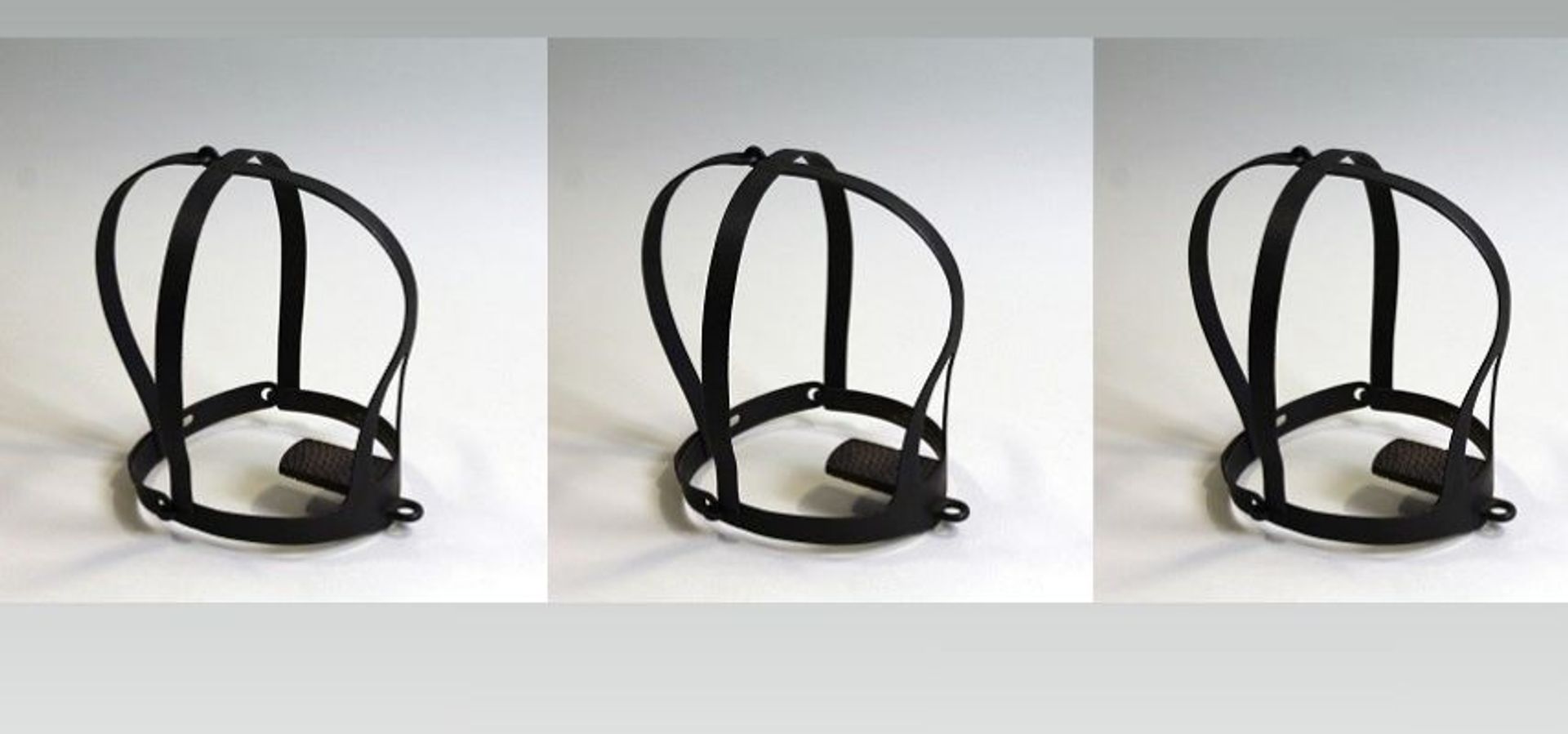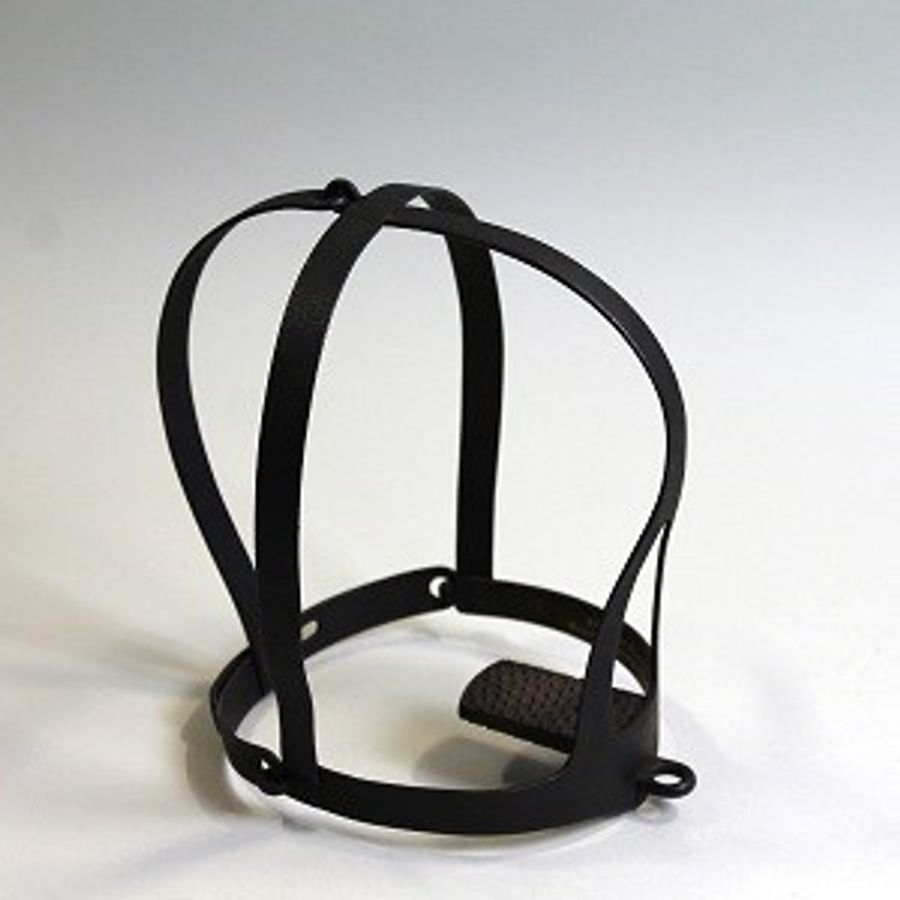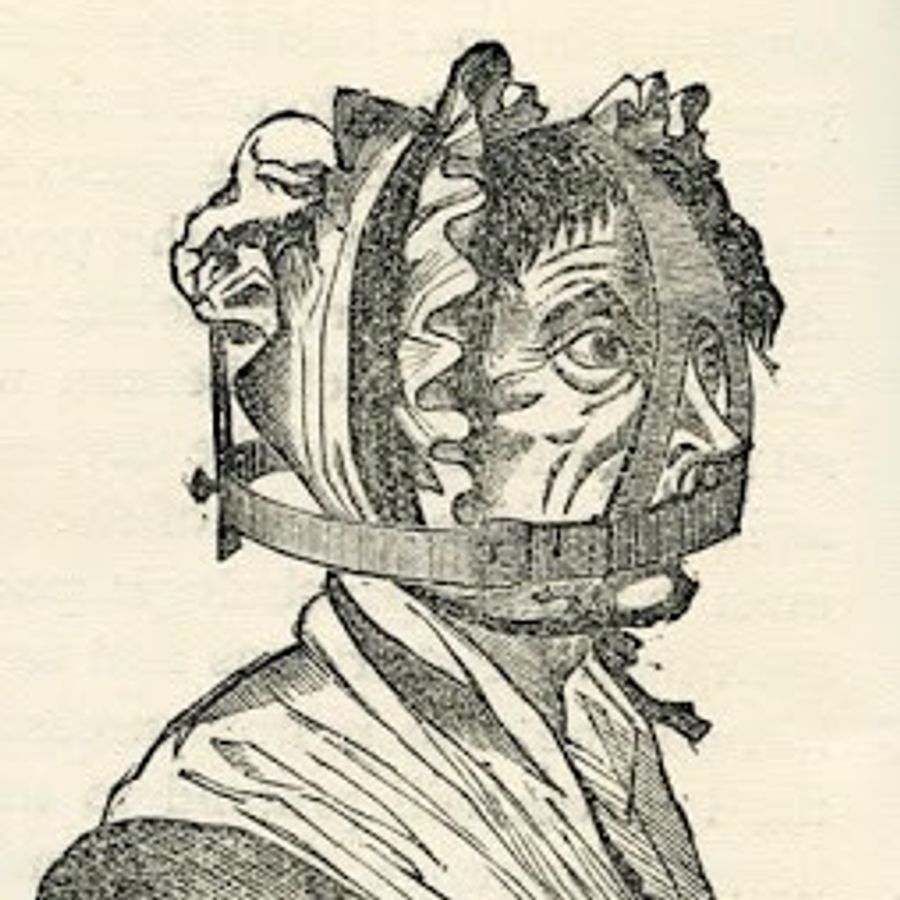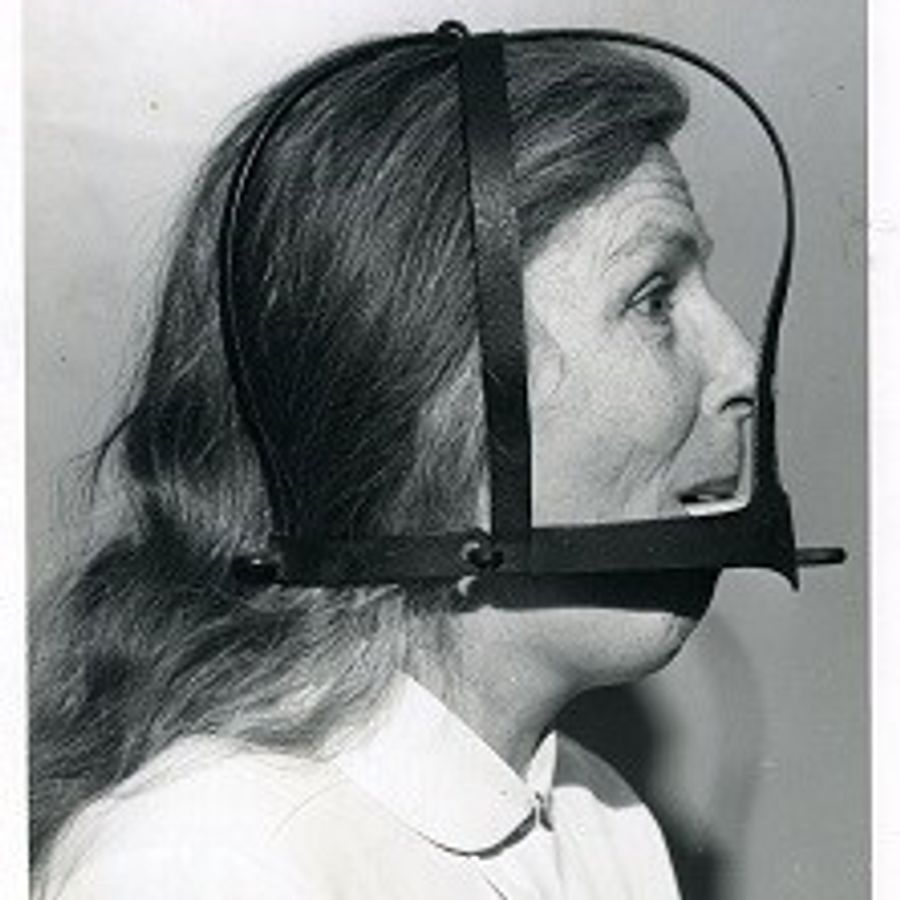
The Morley Brank or Scold’s Bridle
One of the items that has attracted the most publicity and interest in the Abbey House ‘Crime and Punishment’ exhibition is the ‘scold’s bridle’ or ‘brank’.

The ‘Brank’ was a cruel device used to punish those who spoke out of turn (probably mostly used on women). The earliest reference to its use in England seems to be from Macclesfield in 1623, but there are records in Scotland that refer to women being ‘branket’ in 1574.

The brank was an iron framework that was placed on the head to enclose it in a kind of cage. It had in front an iron plate which was either sharpened or covered with spines, to be placed in the mouth of the victim so that she could not move her tongue without injury.
With the brank on her head, she was then conducted through the streets, led by a chain held by one of the town’s officials. In some towns she would have been chained to the pillory, whipping post or market cross.
‘She thus suffered for telling her mind to some petty tyrant in office, or speaking plainly of a wrong doer, or for taking to task a lazy, perhaps drunken husband’, describes an article in Yorkshire Illustrated Monthly, in May 1884.
The same article points out that:
‘The use of the instrument was not sanctioned by law, but was altogether illegal. To everybody it must be a matter of deep regret that the brank should ever have been used at all’.
The brank in our collection is slightly less vicious than some of those found elsewhere. The tongue plate is rough but not spiked. It was collected by the Morley historian Norrison Scatcherd (1780-1853) who left it to Leeds Museums & Galleries, where it has been in the collection since 1863.

By Kitty Ross, Curator of Social History at Leeds Museums & Galleries.
01 March 2016
